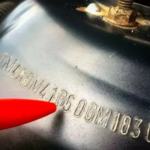Eyes scatter, and do not know what to choose for facade cladding. I want a strong coating and outwardly attractive and so that the work on the cladding is not large -scale. What to choose? Which material to use?
Facade panels.
To begin with, the fact that the installation does not require the participation of highly qualified specialists.
As well as galvanized steel, house clothes are sold in stores.. Such a cladding has a heater – polystyrene foam with a density of approximately 38 to 42 kg per cubic meter. m.
This material completely passes water vapor and does not leave wet traces. Such a cladding is not predisposed to rot and formation of mold. Installation can be carried out in the “capricious” weather. The weight of one slab is about 15 kg.
Clinker brick.
This is a very reliable and durable type of facing material. If you are going to use this particular material, then you need to think over this at the stage of building the house itself. Because the width of the foundation should initially be increased by about 16 cm.
The advantages are manifested in the fact that the clinker brick absorbs only 3-4% of the moisture, which means that this type of cladding does not dive, the fungal layer will not form, and has good frost resistance.
Bricks are sold out. Weight one brick – 3 kg. With average calculations per 1kv. m. 50pcs are consumed. bricks. Work with clinker brick is very laborious and expensive.
Artificial stone.
This type of finish has a significant similarity with ceramic tiles. The artificial stone is easily washed, does not burn out, moisture resistant and does not require special care. For decoration, this is a find, t. To. This type of material has a diverse texture and gamut of shades.
Conducted facing work with an artificial stone should be at a temperature of at least +5. Guaranteed service life -14 years. After installing the entire facing material, it is advisable to cover it with a hydrophobisator. This helps to increase the duration of the artificial stone.
Decorative plaster.
The current construction market presents many varieties of decorative plaster – mosaic, acrylic, silicone and minerals. Decorative plaster is not subject to fading, moisture resistant, holds heat. If you get bored with the color of your finish, then you can independently repaint the facade using acrylic or water -based paint. Minus of this type of finish – the dust “sticks” quickly.
Before applying plaster, it is necessary to strengthen the walls with stone cotton wool or polystyrene. Then the wall should be reinforced with a net, align it with glue and carry out primer work. Recommended temperature for finishing work +5. Such a cladding serves no longer than 16 years.
Now you can choose the best option for yourself based on price preferences, quality, decorativeness. Good luck in choosing “house clothes”!






